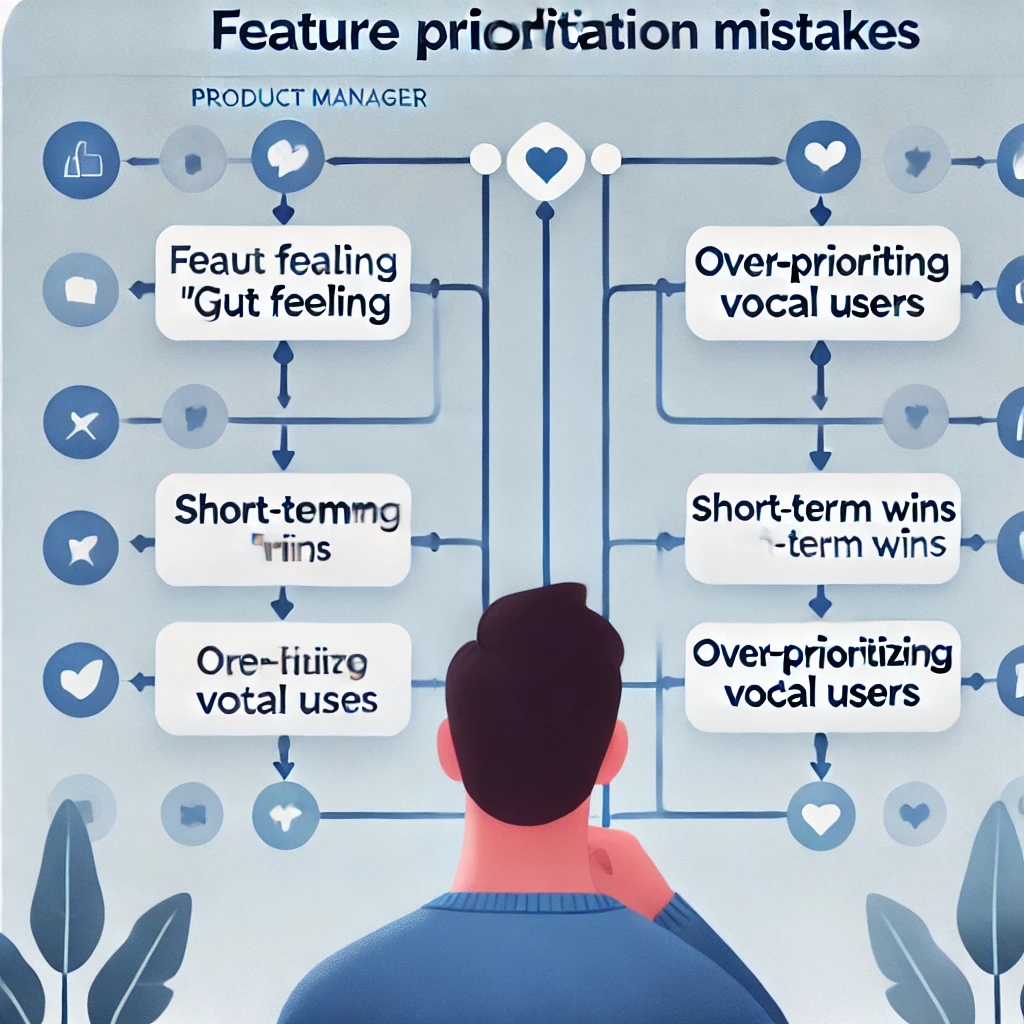
The Biggest Mistakes Product Managers Make with Feature Prioritization (And How to Fix Them)
Here’s the full blog post for the fifth suggested topic:
Title: The Biggest Mistakes Product Managers Make with Feature Prioritization (And How to Fix Them)
Feature prioritization is one of the most critical tasks for product managers. The features you choose to build can define the success of your product, but getting that decision wrong can lead to wasted resources and user dissatisfaction. Yet, many product managers still struggle with feature prioritization due to common mistakes that can easily be avoided.
In this post, we’ll explore the biggest mistakes product managers make when prioritizing features and how to avoid them with a more strategic, data-driven approach.
Mistake #1: Relying on Gut Feelings Instead of Data
One of the most common mistakes product managers make is relying on instinct rather than data. While experience and intuition have their place, decisions about which features to build should be backed by real user data and feedback.
How to Fix It:
Instead of guessing which features will have the most impact, base your decisions on insights from user feedback. Tools that centralize and analyze customer feedback can help you identify common requests and pain points, giving you a clear picture of what users actually want. By leveraging data, you ensure that you’re building features that meet user needs rather than relying on assumptions.
Mistake #2: Failing to Align Features with Business Goals
Another common mistake is not aligning features with broader business objectives. It’s easy to get caught up in building cool features or responding to user requests without considering whether those features support your company’s strategic goals.
How to Fix It:
Before prioritizing a feature, ask yourself how it ties into your product’s vision and business objectives. Does this feature improve the product’s core value? Will it help drive revenue, increase user engagement, or support long-term growth? By aligning features with your business goals, you ensure that the product development process supports overall company success.
Mistake #3: Not Listening to the Right Users
While gathering user feedback is important, not all feedback carries equal weight. Some product managers make the mistake of prioritizing feedback from a small, vocal group of users rather than focusing on the needs of their entire user base.
How to Fix It:
Segment your users and prioritize feedback from those who represent your ideal customer profile. Pay attention to power users, paying customers, and segments with high churn rates to identify what improvements are necessary. Avoid making decisions based on the loudest voices and instead focus on what will benefit the majority of your user base.
Mistake #4: Over-Prioritizing Short-Term Wins
Short-term wins can be tempting. Features that offer quick solutions to immediate problems or are requested by key stakeholders may seem urgent, but over-prioritizing these can lead to a fragmented product and missed long-term opportunities.
How to Fix It:
Balance short-term wins with long-term growth. Consider how each feature fits into your product’s roadmap and future development. Features should not only solve immediate needs but also contribute to the product’s overall vision. Create a framework that balances quick wins with strategic, long-term features to keep the product moving in the right direction.
Mistake #5: Lack of a Clear Prioritization Framework
One of the biggest mistakes product managers make is not having a clear prioritization framework in place. Without a systematic way to evaluate and rank feature requests, product teams often end up overwhelmed by feedback and unsure which features to build first.
How to Fix It:
Use a structured prioritization framework like RICE (Reach, Impact, Confidence, Effort), MoSCoW (Must-Have, Should-Have, Could-Have, Won’t-Have), or a scoring system tailored to your business. These frameworks provide a repeatable process for evaluating features and help ensure consistency in decision-making.
Better yet, leverage tools that automatically prioritize features based on data, so you don’t have to start from scratch every time. These tools analyze feedback, identify trends, and suggest the most impactful features, taking the guesswork out of the process.
How Our SaaS Can Help You Avoid These Mistakes
Our SaaS tool is designed to help product managers avoid these common feature prioritization mistakes by offering a clear, data-driven process. Here’s how:
- Centralized Feedback: Connect your user feedback from Zendesk, email, and other platforms to one place for a comprehensive view of user needs.
- Automated Analysis: Our AI analyzes and categorizes feedback, so you can focus on the features that matter most to your users.
- Feature Prioritization: Use our automated prioritization tools to align feature requests with business goals, making sure your decisions are both user-centric and strategic.
By implementing the right tools and avoiding these common mistakes, you can streamline your product development process and build features that truly drive value for your users and your business.
Conclusion
Feature prioritization is a balancing act. Avoiding common mistakes such as relying on gut feelings, failing to align with business goals, and not having a clear framework will help you make more informed, impactful decisions. With the right process and tools in place, you can ensure that your product evolves in a way that satisfies users and supports your company’s growth.
Ready to streamline your feature prioritization process? Sign up for a demo of our SaaS tool today and see how we can help you build features that matter.